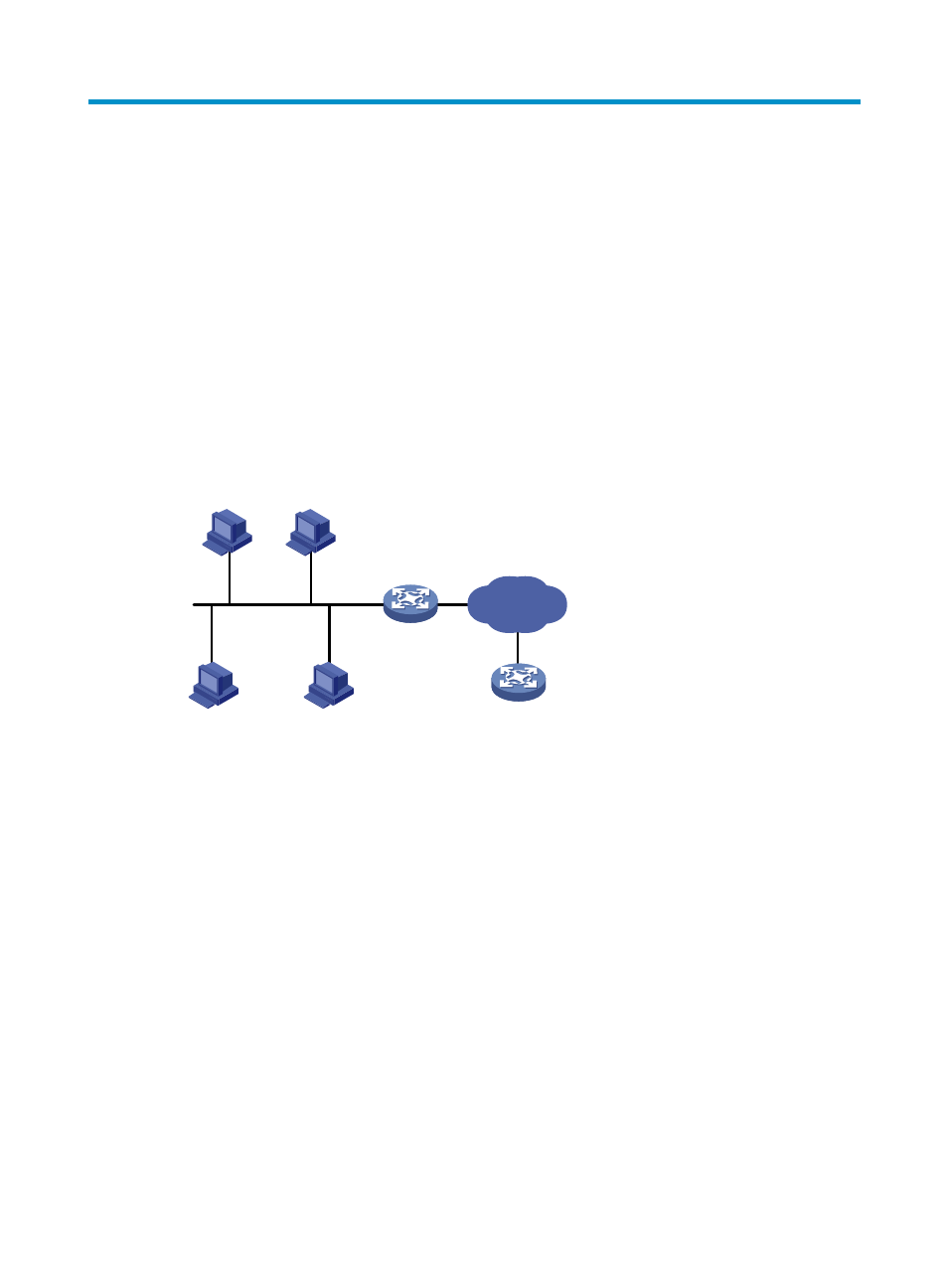Configuring the dhcpv6 relay agent, Overview – H3C Technologies H3C S5560 Series Switches User Manual
Page 199

184
Configuring the DHCPv6 relay agent
The term "interface" in this section collectively refers to VLAN interfaces and Layer 3 Ethernet interfaces.
You can set an Ethernet port as a Layer 3 interface by using the port link-mode route command (see
Layer 2—LAN Switching Configuration Guide).
Overview
A DHCPv6 client usually uses a multicast address to contact the DHCPv6 server on the local link to obtain
an IPv6 address and other configuration parameters. As shown in
, if the DHCPv6 server
resides on another subnet, the DHCPv6 clients need a DHCPv6 relay agent to contact the server. The
relay agent feature avoids deploying a DHCP server on each subnet.
Figure 72 Typical DHCPv6 relay agent application
As shown in
, a DHCPv6 client obtains an IPv6 address and other network configuration
parameters from a DHCPv6 server through a DHCPv6 relay agent. The following example uses rapid
assignment to describe the process:
•
The DHCPv6 client sends a Solicit message containing the Rapid Commit option to the multicast
address FF02::1:2 of all the DHCPv6 servers and relay agents.
•
After receiving the Solicit message, the DHCPv6 relay agent encapsulates the message into the
Relay Message option of a Relay-forward message, and sends the message to the DHCPv6 server.
•
After obtaining the Solicit message from the Relay-forward message, the DHCPv6 server performs
the following tasks:
{
Selects an IPv6 address and other required parameters.
{
Adds them to a reply that is encapsulated within the Relay Message option of a Relay-reply
message.
{
Sends the Relay-reply message to the DHCPv6 relay agent.
•
The DHCPv6 relay agent obtains the reply from the Relay-reply message and sends the reply to the
DHCPv6 client.
•
The DHCPv6 client uses the IPv6 address and other network parameters assigned by the DHCPv6
server to complete network configuration.
IPv6 network
DHCPv6 server
DHCPv6 relay agent
DHCPv6 client
DHCPv6 client
DHCPv6 client
DHCPv6 client
